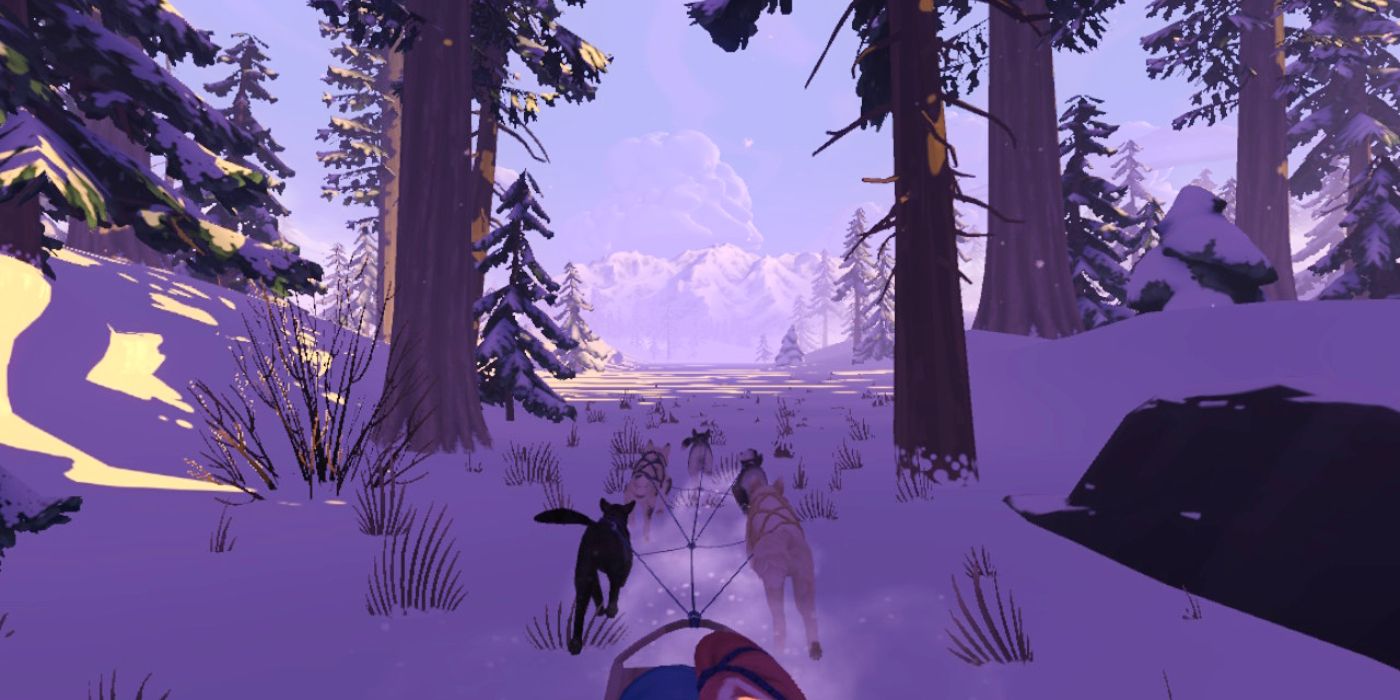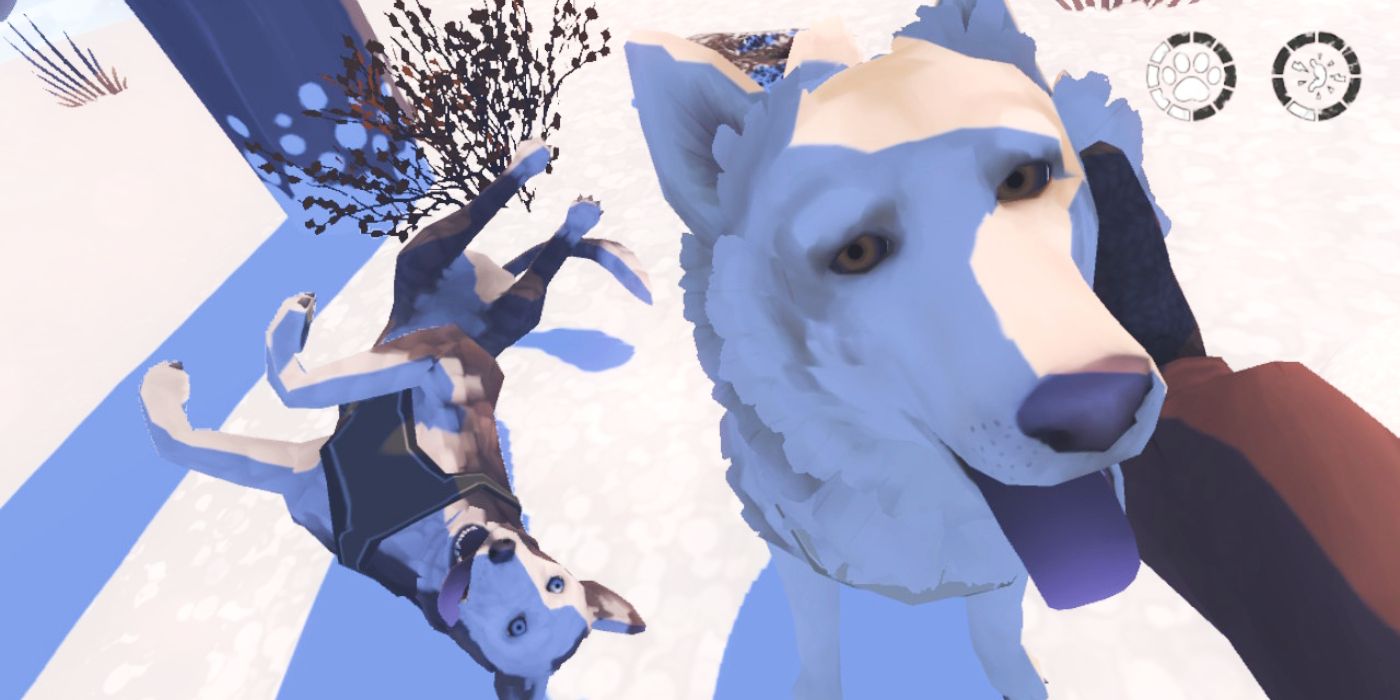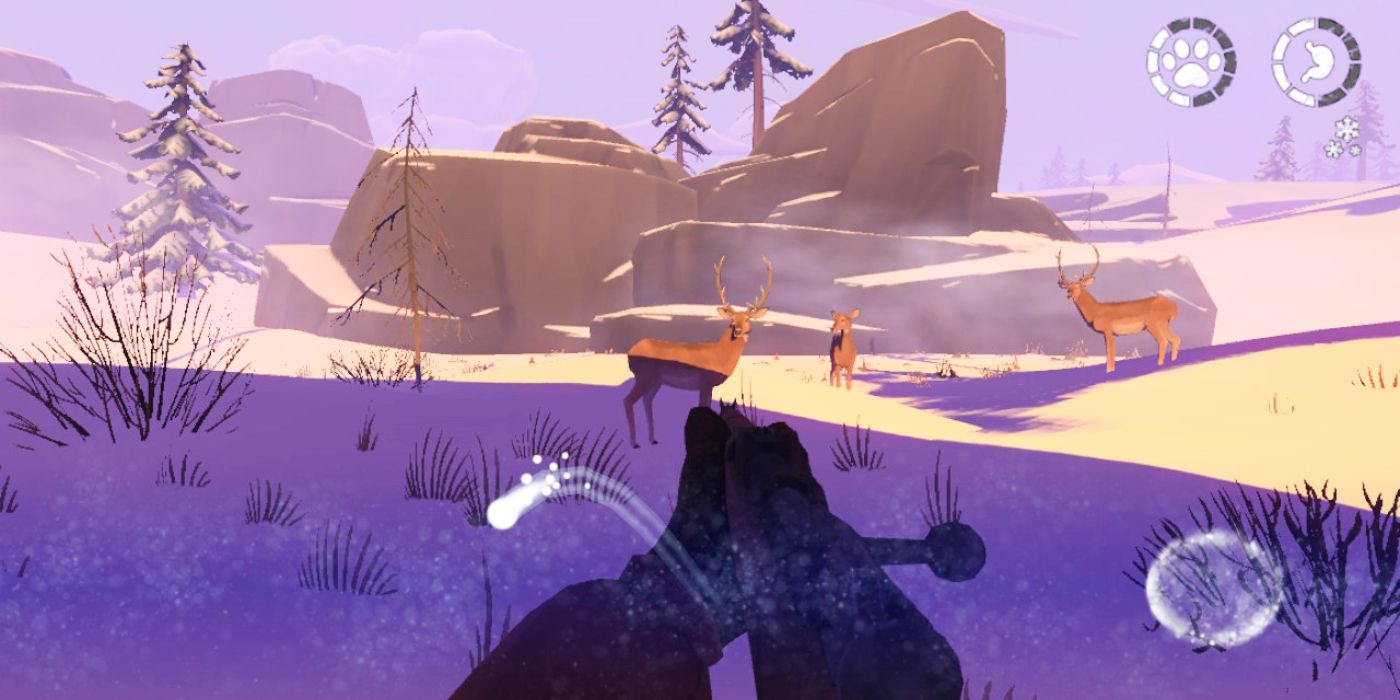Timberline Studio's The Red Lantern is a game about discovering one's true self in the Alaskan wilderness, aided by the harrowing threat of death and a pack of loving sled dogs. But it is only just about that. Video games can often provide what other mediums can't; they show, not tell, immersing players in the moment and making them feel what a character feels. The Red Lantern, though, mostly just tells.
The Red Lantern is a first-person, on-rails Roguelite, in which protagonist The Musher seeks a new life, giving up her med school pursuits in favor of dog-sledding to a friend's remote cabin. At the start of their journey, players choose four dogs to adopt from a set of eight. These join Chomper, a pup The Musher brought from her former home, to begin an ill-prepared trip into the wilds.
The dogs are The Red Lantern's best element. Each of them has a distinct look and personality (stan Barkley), along with an important trait, like a strong sense of smell or a fighting spirit. The dog adoption sequence, which takes The Musher to various backyard kennels, is a fun, organic way of choosing a team, and it immediately starts establishing a bond between dog and player. Throughout the expedition, players can then choose to listen to the dogs' instincts, further growing that bond and experiencing little vignettes with them. The dogs also look and act the part (though their eyes can be a bit uncanny up close).
With dogs in tow, it's off into the wide-open spaces of untamed Alaska. Except, for all The Musher's talk of finding freedom (she talks to herself a lot), The Red Lantern's actual gameplay is a bit of a buzzkill. Rather than controlling the sled directly, players just watch it go until The Musher spots something in the distance and asks herself if it's worth investigating. Approaching an encounter drains The Musher's hunger meter (as does continuing to travel and passing a trail marker), but it can also yield valuable resources, like food or firewood. Once these resources are gathered, players will need to set up camp to use them, then hit the trail again, choosing to either go left or right at an upcoming fork. This simple loop - watch meters drain, choose whether or not to risk an encounter, set up camp, watch meters drain again - is basically all there is to The Red Lantern.
Because players have very little freedom, the whole thing can feel unfairly luck-based. If The Musher is almost starved to death, the player can't actively look for food. They'll just have to wait and hope an opportunity comes up. Granted, this lack of agency gives the game a certain sense of realism: The Musher doesn't have the know-how to actively survive. Instead, she relies on luck and instincts. It can actually feel satisfying to get lucky and then manage any earned resources well, but there are also plenty of times players are forced to sit back and accept there may be nothing they can do to prevent a failed run.
Adding to the frustration is the fact that player choices don't always play out the way they seem. For instance, players choosing to get closer to an elk (hoping, perhaps, for a clearer shot) might suddenly hear the musher choose she's "gonna go now." Additionally, the shooting minigame, where players are tasked with lining up two moving reticles at the bottom of the screen, occasionally results in missed shots when the icons seemed perfectly aligned. Every time players hunts an animal, sad music plays, so it's clear these moments are meant to elicit some emotion. But when the choice of a much-needed meal is robbed from players, these encounters just feel cheap.
Unfortunately, that's how most of The Red Lantern's story feels, too. There's not much of it, as it's limited to The Musher's constant internal dialogue, but what's there is so heavy-handed that it doesn't give players enough room to consider the significance of her trip for themselves. Here are a few excerpts:
"If I survive, will I find what I'm looking for?"
"Nothing will stop us from getting home. We can conquer anything."
"To think that I used to worry about if my french fries would be soggy or not. ... I was lucky enough to be able to pay the bills. But it wasn't enough. I guess, I was lucky enough to think that too."
"I know I can get through this pain. This challenge."
It's all rather nebulous, and its impact relies on the fact that players will most likely be so familiar with the "character discovers their true self in nature" trope (whatever "discovering oneself" actually means) that they'll just accept The Musher's journey on its face. Bits of repeated dialogue at certain points in each run also get tiring.
According to Timberline, a successful run of The Red Lantern should take players "around 4-5 hours" to complete, and the game includes "hundreds" of unique encounters. We finished our first run in just over an hour, however, and we ran into a several of the same encounters on subsequent runs. Perhaps some of this repetition is purposeful, allowing players to learn from their mistakes and use resources gathered from previous runs. But it only made the experience feel more limited.
That all being said, The Red Lantern's visuals and concept are appealing enough that, if the idea of a dog-sledding game sounds interesting, it can still provide a couple hours of laid-back, dog-petting gaming.
The Red Lantern released on October 22, 2020, for PC (via the Epic Games Store) and Nintendo Switch. A Switch review code was provided to Screen Rant for review.



